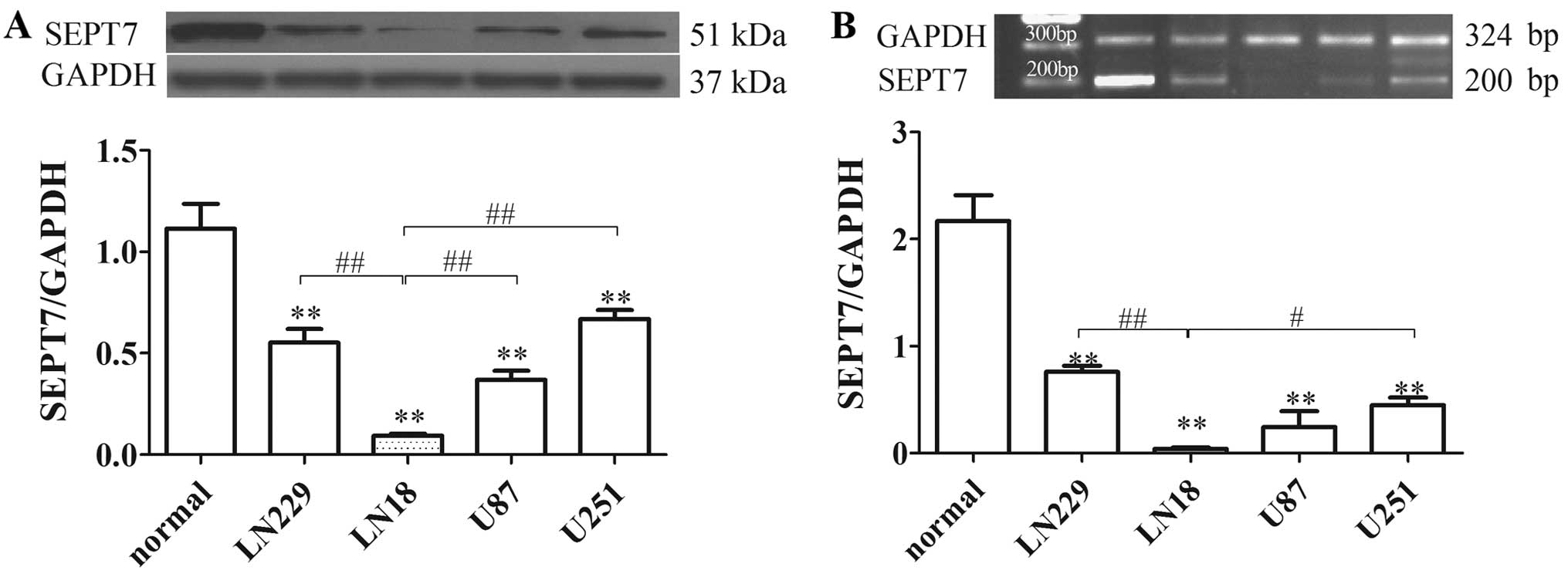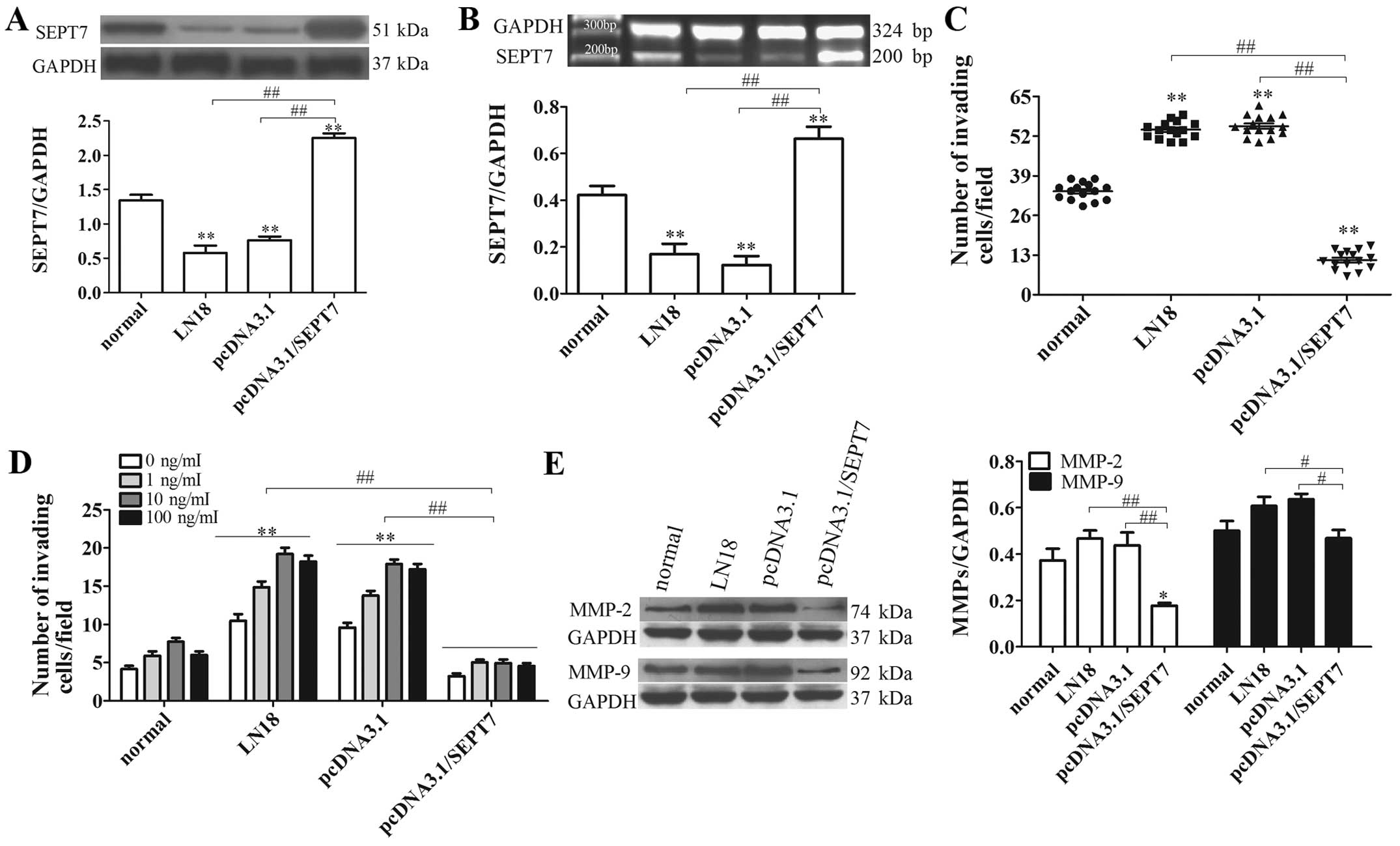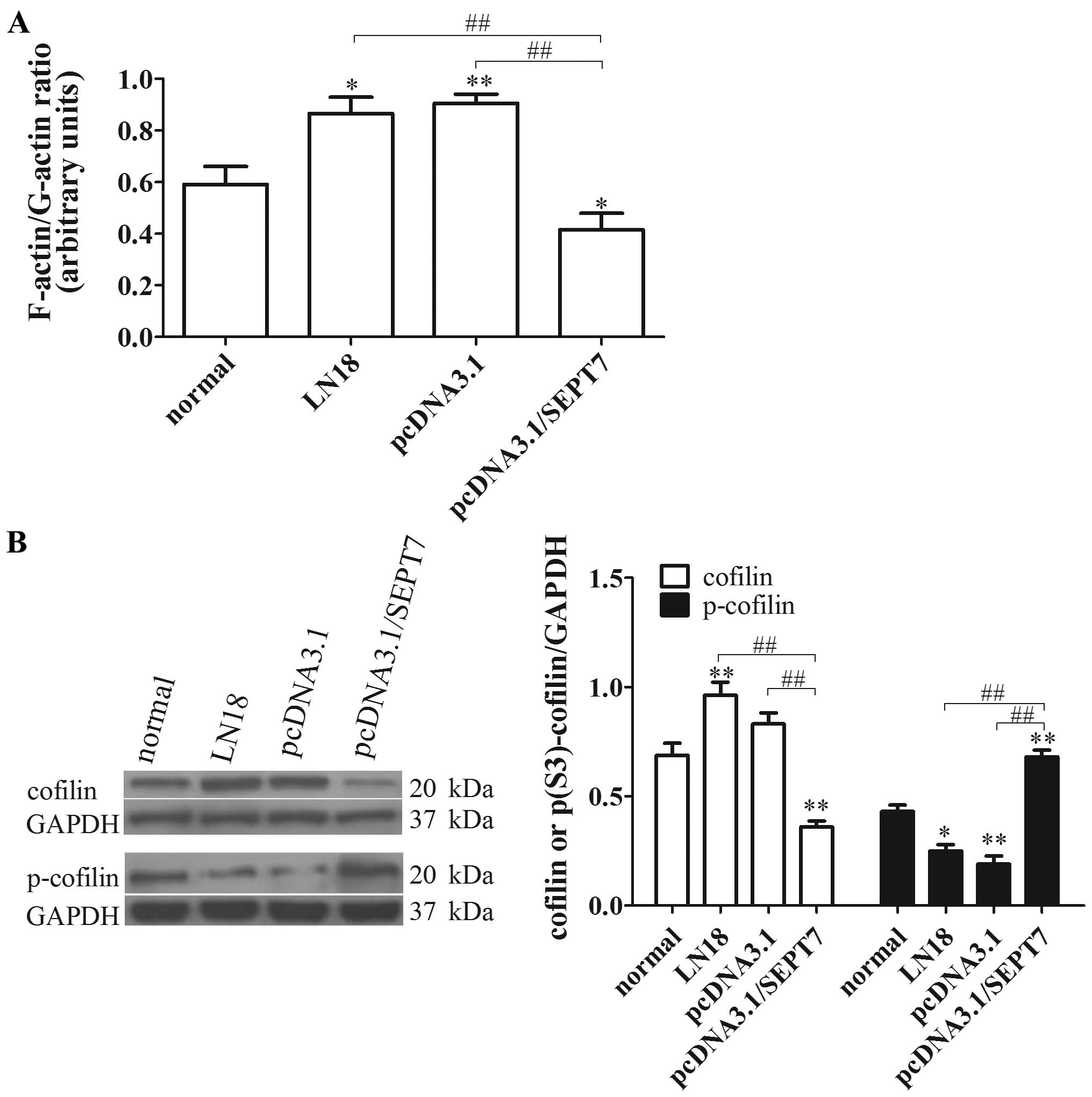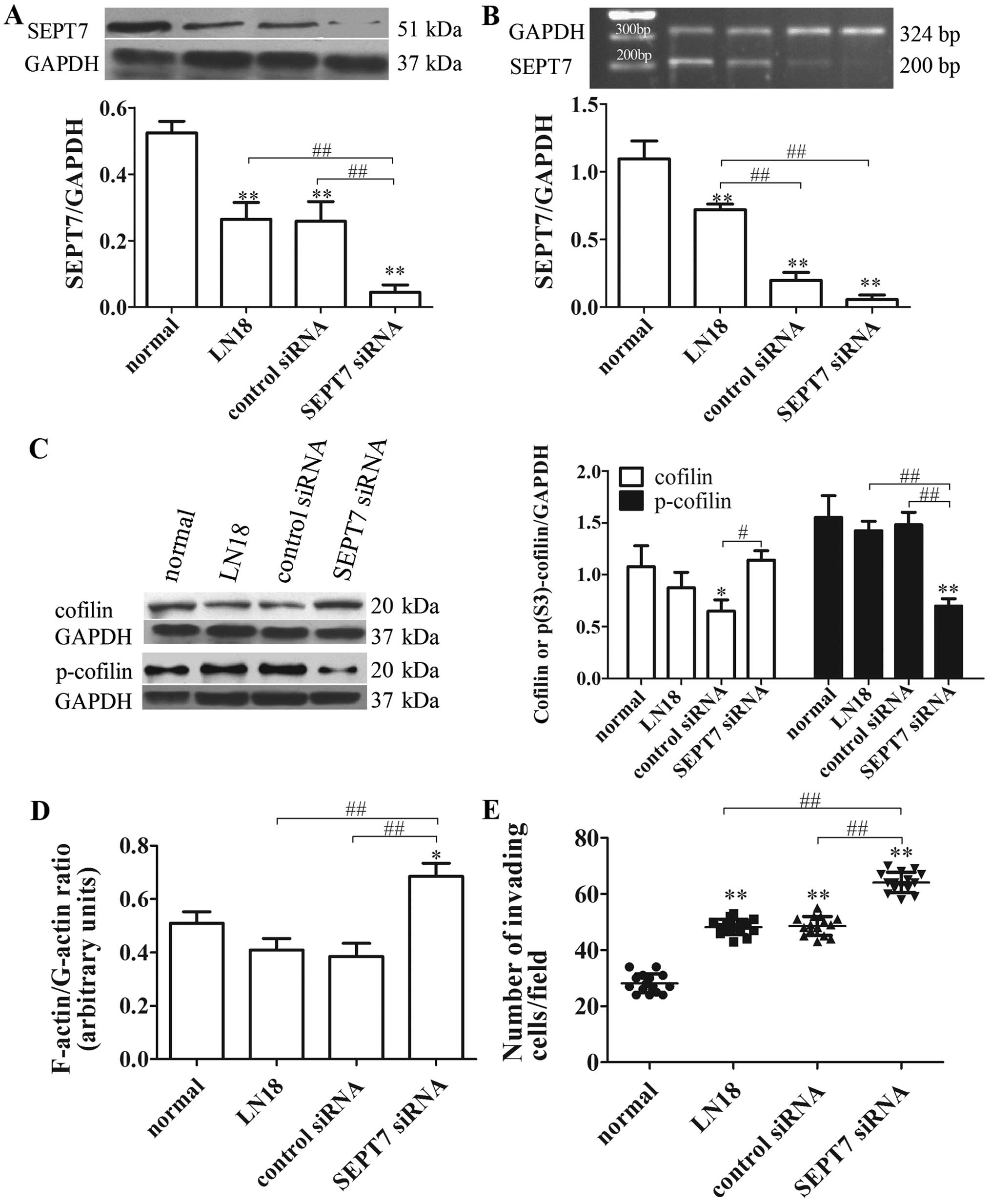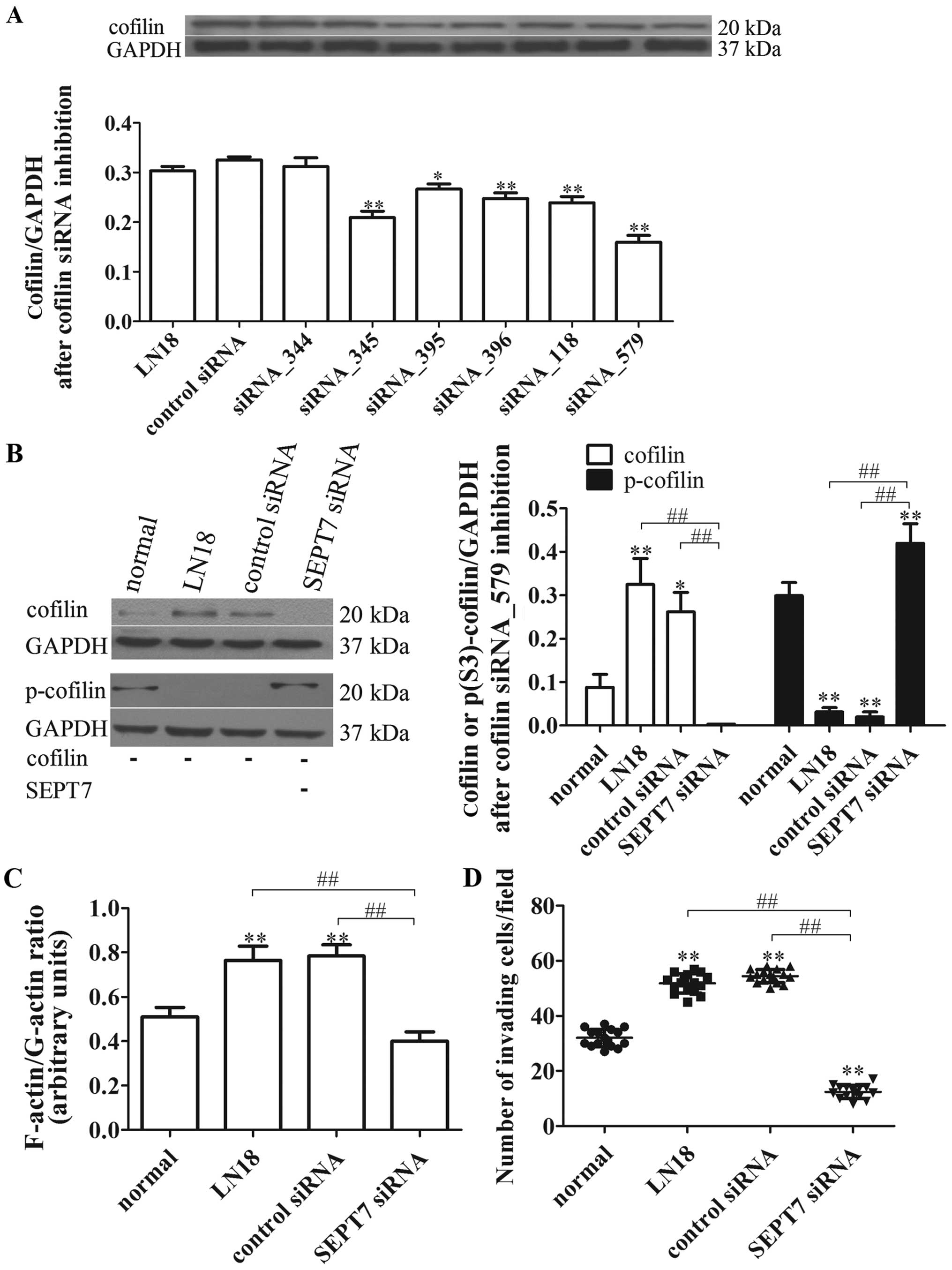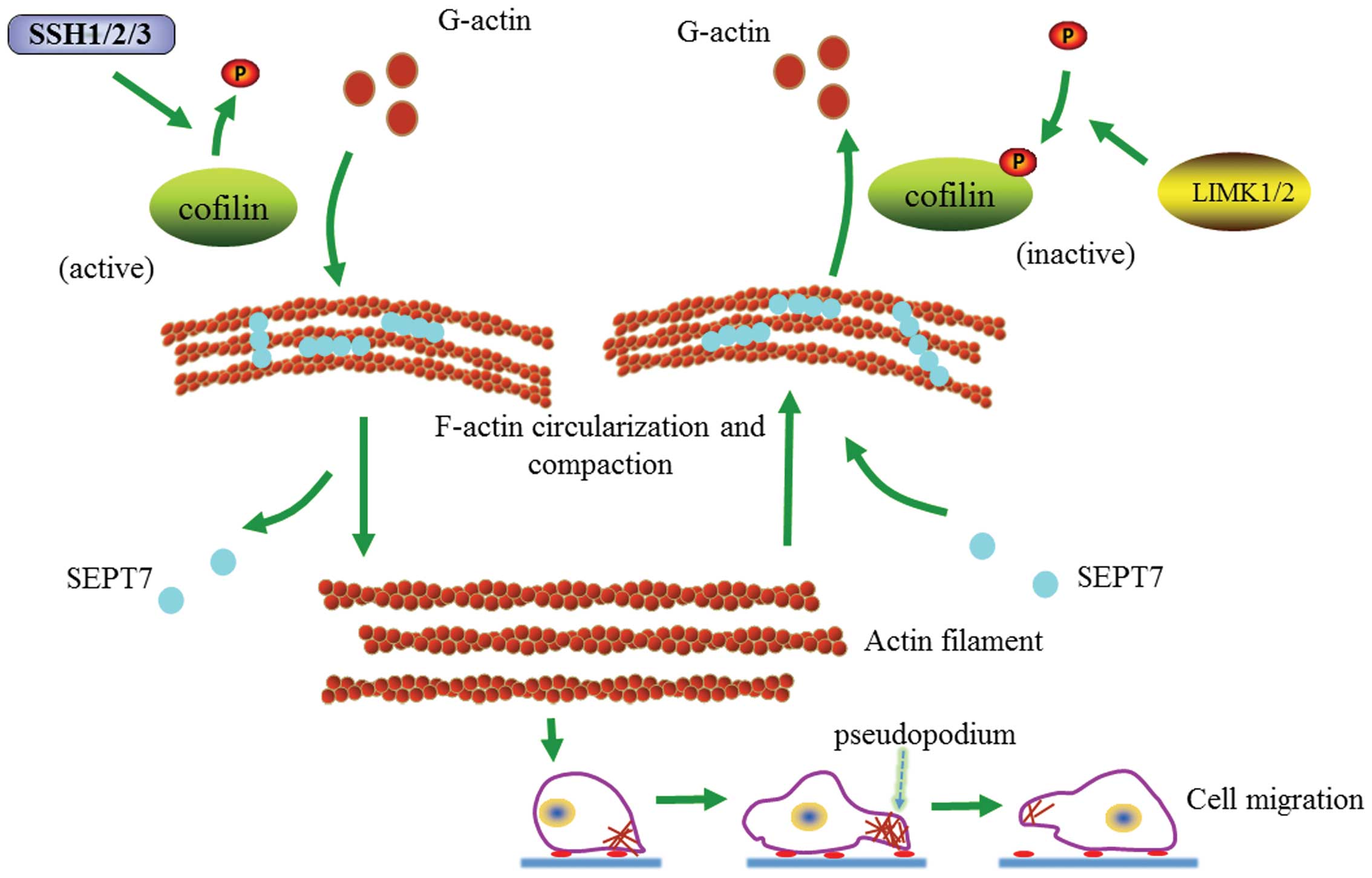|
1
|
Ohgaki H and Kleihues P: Epidemiology and
etiology of gliomas. Acta Neuropathol. 109:93–108. 2005. View Article : Google Scholar : PubMed/NCBI
|
|
2
|
Claes A, Idema AJ and Wesseling P: Diffuse
Glioma growth: A guerilla war. Acta Neuropathol. 114:443–458. 2007.
View Article : Google Scholar : PubMed/NCBI
|
|
3
|
Giese A and Westphal M: Glioma invasion in
the central nervous system. Neurosurgery. 39:235–250; discussion
250–252. 1996. View Article : Google Scholar : PubMed/NCBI
|
|
4
|
Meyer MA: Malignant gliomas in adults. N
Engl J Med. 359:1850author reply 1850. 2008. View Article : Google Scholar : PubMed/NCBI
|
|
5
|
Mittal S, Szlaczky MC and Barger GR:
Low-grade gliomas in adults. Curr Treat Options Neurol. 10:271–284.
2008. View Article : Google Scholar : PubMed/NCBI
|
|
6
|
Wen PY and Kesari S: Malignant Gliomas in
adults. N Engl J Med. 359:492–507. 2008. View Article : Google Scholar : PubMed/NCBI
|
|
7
|
Laws ER, Shaffrey ME, Morris A and
Anderson FA Jr: Surgical management of intracranial gliomas - does
radical resection improve outcome? Acta Neurochir (Suppl).
85:47–53. 2003. View Article : Google Scholar
|
|
8
|
Simon M and Schramm J: Surgical management
of intracranial gliomas. Recent Results Cancer Res. 171:105–124.
2009. View Article : Google Scholar : PubMed/NCBI
|
|
9
|
Jia ZF, Huang Q, Kang CS, Yang WD, Wang
GX, Yu SZ, Jiang H and Pu PY: Overexpression of septin 7 suppresses
glioma cell growth. J Neurooncol. 98:329–340. 2010. View Article : Google Scholar
|
|
10
|
Hall PA, Jung K, Hillan KJ and Russell SE:
Expression profiling the human septin gene family. J Pathol.
206:269–278. 2005. View Article : Google Scholar : PubMed/NCBI
|
|
11
|
Jiang H, Hua D, Zhang J, Lan Q, Huang Q,
Yoon JG, Han X, Li L, Foltz G, Zheng S, et al: MicroRNA-127-3p
promotes glioblastoma cell migration and invasion by targeting the
tumor-suppressor gene SEPT7. Oncol Rep. 31:2261–2269.
2014.PubMed/NCBI
|
|
12
|
Xu S, Jia ZF, Kang C, Huang Q, Wang G, Liu
X, Zhou X, Xu P and Pu P: Upregulation of SEPT7 gene inhibits
invasion of human glioma cells. Cancer Invest. 28:248–258. 2010.
View Article : Google Scholar
|
|
13
|
Bravo-Cordero JJ, Magalhaes MA, Eddy RJ,
Hodgson L and Condeelis J: Functions of cofilin in cell locomotion
and invasion. Nat Rev Mol Cell Biol. 14:405–415. 2013. View Article : Google Scholar : PubMed/NCBI
|
|
14
|
Mizuno K: Signaling mechanisms and
functional roles of cofilin phosphorylation and dephosphorylation.
Cell Signal. 25:457–469. 2013. View Article : Google Scholar
|
|
15
|
Gladfelter AS: Cytoskeleton: Cirque du
septins. Curr Biol. 24:R526–R528. 2014. View Article : Google Scholar : PubMed/NCBI
|
|
16
|
Brooks PC, Strömblad S, Sanders LC, von
Schalscha TL, Aimes RT, Stetler-Stevenson WG, Quigley JP and
Cheresh DA: Localization of matrix metalloproteinase MMP-2 to the
surface of invasive cells by interaction with integrin alpha v beta
3. Cell. 85:683–693. 1996. View Article : Google Scholar : PubMed/NCBI
|
|
17
|
Ramos-DeSimone N, Hahn-Dantona E, Sipley
J, Nagase H, French DL and Quigley JP: Activation of matrix
metallopro-teinase-9 (MMP-9) via a converging plasmin/stromelysin-1
cascade enhances tumor cell invasion. J Biol Chem. 274:13066–13076.
1999. View Article : Google Scholar : PubMed/NCBI
|
|
18
|
Hu J, Bai X, Bowen JR, Dolat L, Korobova
F, Yu W, Baas PW, Svitkina T, Gallo G and Spiliotis ET:
Septin-driven coordination of actin and microtubule remodeling
regulates the collateral branching of axons. Curr Biol.
22:1109–1115. 2012. View Article : Google Scholar : PubMed/NCBI
|
|
19
|
Mavrakis M, Azou-Gros Y, Tsai FC, Alvarado
J, Bertin A, Iv F, Kress A, Brasselet S, Koenderink GH and Lecuit
T: Septins promote F-actin ring formation by crosslinking actin
filaments into curved bundles. Nat Cell Biol. 16:322–334. 2014.
View Article : Google Scholar : PubMed/NCBI
|
|
20
|
Agudelo-garcia PA, De Jesus JK, Williams
SP, Nowicki MO, Chiocca EA, Liyanarachchi S, Li PK, Lannutti JJ,
Johnson JK, Lawler SE, et al: Glioma cell migration on
three-dimensional nanofiber scaffolds is regulated by substrate
topography and abolished by inhibition of STAT3 signaling.
Neoplasia. 13:831–840. 2011. View Article : Google Scholar : PubMed/NCBI
|
|
21
|
Rao JS: Molecular mechanisms of glioma
invasiveness: The role of proteases. Nat Rev Cancer. 3:489–501.
2003. View
Article : Google Scholar : PubMed/NCBI
|
|
22
|
Yamaguchi H and Condeelis J: Regulation of
the actin cyto-skeleton in cancer cell migration and invasion.
Biochim Biophys Acta. 1773:642–652. 2007. View Article : Google Scholar
|
|
23
|
Sung BH, Zhu X, Kaverina I and Weaver AM:
Cortactin controls cell motility and lamellipodial dynamics by
regulating ECM secretion. Curr Biol. 21:1460–1469. 2011. View Article : Google Scholar : PubMed/NCBI
|
|
24
|
Yumura S, Itoh G, Kikuta Y, Kikuchi T,
Kitanishi-Yumura T and Tsujioka M: Cell-scale dynamic recycling and
cortical flow of the actin-myosin cytoskeleton for rapid cell
migration. Biol Open. 2:200–209. 2013. View Article : Google Scholar : PubMed/NCBI
|
|
25
|
Murrell MP and Gardel ML: F-actin buckling
coordinates contractility and severing in a biomimetic actomyosin
cortex. Proc Natl Acad Sci USA. 109:20820–20825. 2012. View Article : Google Scholar : PubMed/NCBI
|
|
26
|
Vogel SK, Petrasek Z, Heinemann F and
Schwille P: Myosin motors fragment and compact membrane-bound actin
filaments. eLife. 2:e001162013. View Article : Google Scholar : PubMed/NCBI
|















